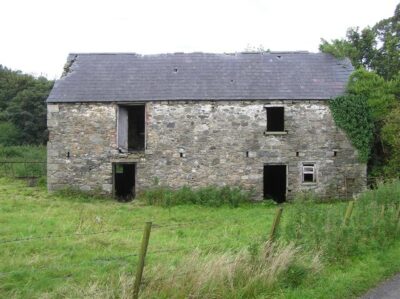Farmyard
Overview
The farmyard is an important habitat for many species of wildlife and this fact is often overlooked when protection of habitats is being considered. Unfortunately, modern day farm buildings are not as suitable for a variety of bird and bat species as the traditional stone structures of the past. Mass concrete has replaced stone and cavity walls.

Creation
Bat and bird boxes are a very successful alternative to the more natural tree holes, attic spaces or crevices in old buildings and roofs that formerly occurred in abundance around farmyards. All participating BRIDE farms will be supplied with two bat boxes (a breeding box and a roosting box) and two bird boxes (specific to the farm) for use inside farm buildings.
We recommend the use of rodenticide alternatives if farms have rodent issues – such as a variety of traps or the use of dogs and cats as a control method. Barn Owls & other birds of prey are very prone to secondary poisoning where rodenticides are being used as they can ingest the poisoned rodents.
Management
Bat boxes are maintenance free, so once installed correctly they can be left, monitor from a distance.
Bird boxes which have been occupied should also be monitored from a distance, resist the temptation to interfere as this could potentially
result in the parents abandoning the nest. Instead, watch the comings and goings of the birds from a safe distance, they will behave more
naturally and you will enjoy and learn more this way. Bird boxes can be opened from the end of October and cleaned out. Empty out the old nesting material and any unhatched eggs, and clean the inside with boiling water – this should kill any parasites that may infect next years brood.
Rodenticide Alternatives Check the traps on a daily basis and reset the traps if needed. Use gloves when disposing of dead rodents. Prevention is better than cure, so using feed bins and other good storage facilities for animal feed-stuffs will greatly reduce the threat from rodents.
Benefits
Bats – Bats are very beneficial as they eat midges, mosquitoes and other pest species in large numbers. Even our smallest bats, the Pipistrelles, (which can fit on the end of your thumb) can easily consume 3,000 insects in one night.
Birds – Bird nest boxes provide much needed nesting habitat for a variety of threatened species and for some species (e.g. Barn Owl) these boxes can also be used as winter roost sites and will increase the chances of nesting in spring.
Rodenticide Alternatives – Rodents are important prey to a range of predators including Barn Owls, Long-eared Owls, Hen Harriers, Buzzards, Kestrels, Stoats and Foxes. Ingestion of poisoned rodents can be fatal for these species as well as family pets.
Further Information
Further information can be found on page 18 of our publication – “The BRIDE Project EIP Farm Habitat Management Guidelines” – link HERE
